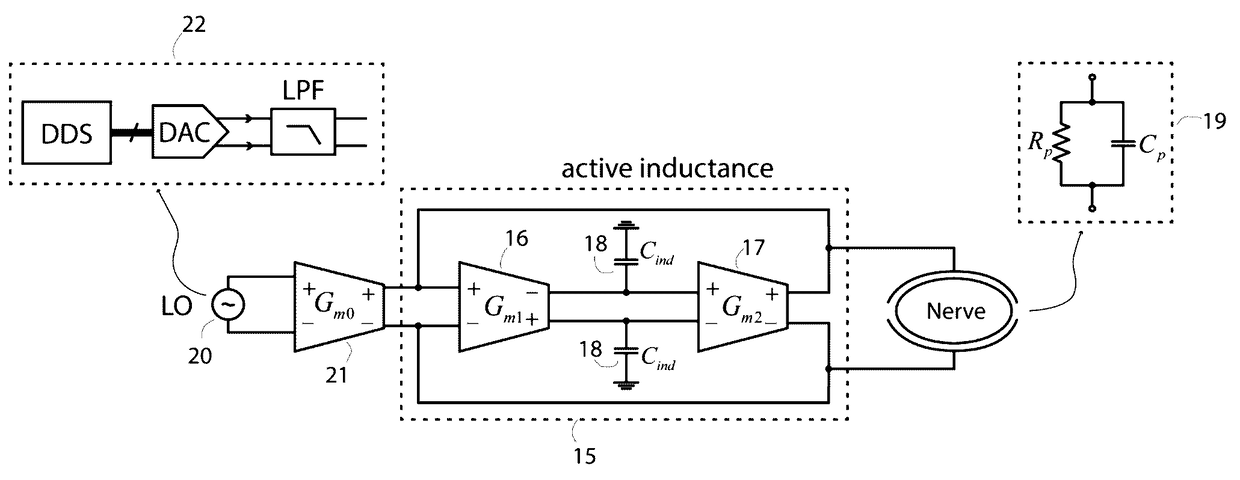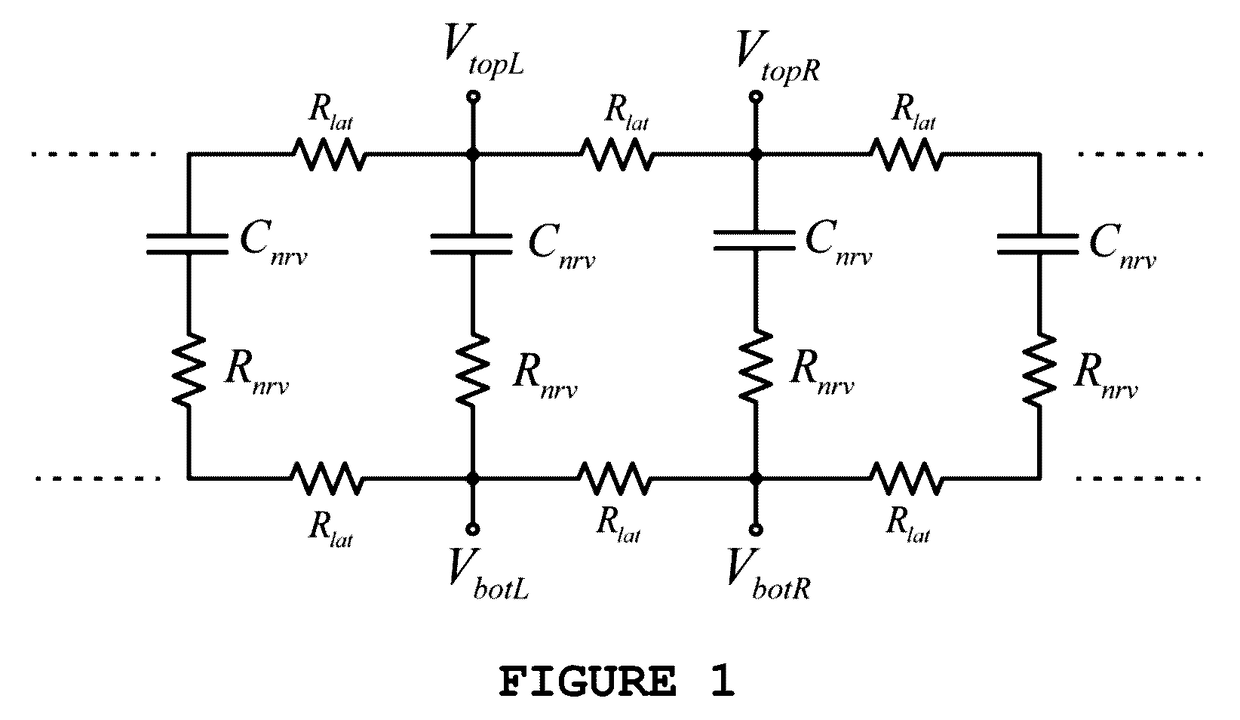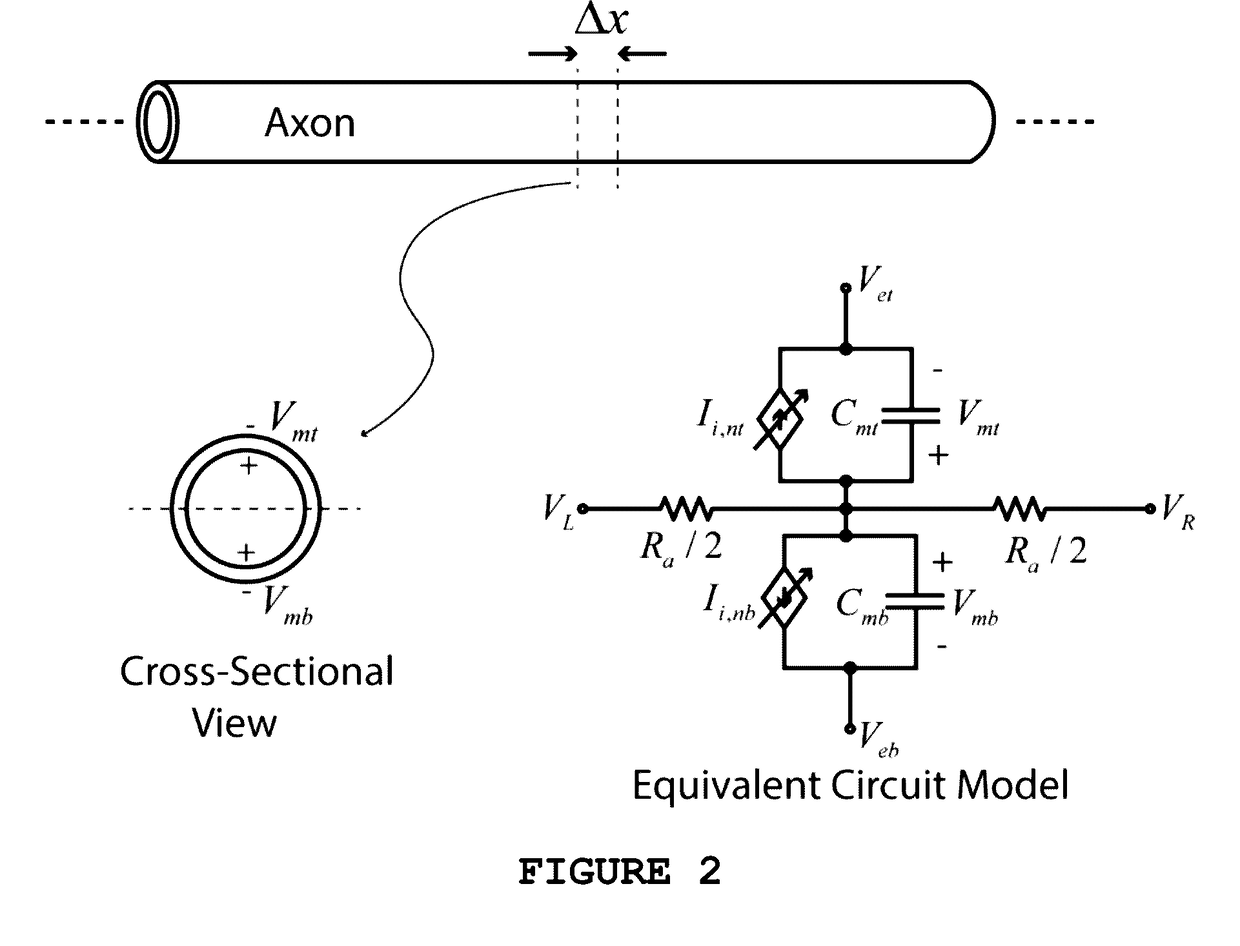Multi-electrode, Energy-Recycling, Resonant Stimulation Circuits and Architectures for Nerve Blocking
a nerve blocker and energy-recycling technology, applied in the field of multi-electrode, energy-recycling, resonant stimulation circuits and architectures for nerve blockers, can solve the problems of low energy benefit, low energy efficiency of power-supply techniques, and high energy consumption of current so as to reduce energy and power consumption of nerve blocker stimulation systems, energy-efficient and selective
- Summary
- Abstract
- Description
- Claims
- Application Information
AI Technical Summary
Benefits of technology
Problems solved by technology
Method used
Image
Examples
Embodiment Construction
The Bridge-Cuff Blocking Stimulator
[0029]The ‘bridge cuff blocking stimulator’, which represents one embodiment of our invention, has two partially circumferential electrodes above the nerve, separated from each other by a small lateral distance as in current blocking stimulators. In addition, it has two partially circumferential electrodes below the nerve in symmetric locations, also separated from each other by the same lateral distance. Unlike a current blocking stimulator, we ensure that the lateral voltage drop across neighboring electrodes either below or above the nerve is always small. Thus, the lateral impedance of approximately 50Ω (estimated from 5V / 100 mA measurements in traditional blocking stimulators) always develops little voltage across it and does not dissipate power by design. A feedback loop in a current-stimulation strategy can enforce this adiabatic voltage constraint across two electrodes through various means. In a voltage-stimulation strategy, two electrode ...
PUM
 Login to View More
Login to View More Abstract
Description
Claims
Application Information
 Login to View More
Login to View More - R&D
- Intellectual Property
- Life Sciences
- Materials
- Tech Scout
- Unparalleled Data Quality
- Higher Quality Content
- 60% Fewer Hallucinations
Browse by: Latest US Patents, China's latest patents, Technical Efficacy Thesaurus, Application Domain, Technology Topic, Popular Technical Reports.
© 2025 PatSnap. All rights reserved.Legal|Privacy policy|Modern Slavery Act Transparency Statement|Sitemap|About US| Contact US: help@patsnap.com



